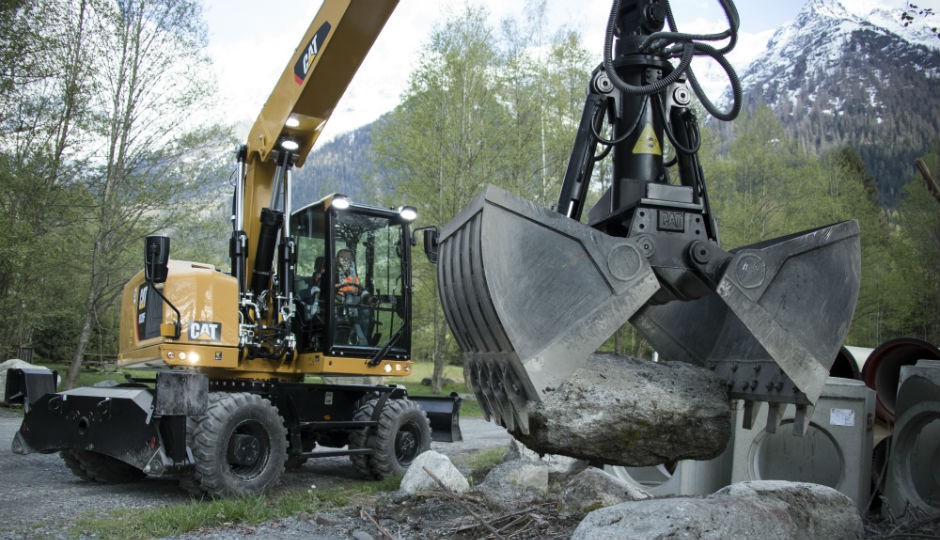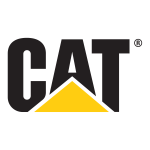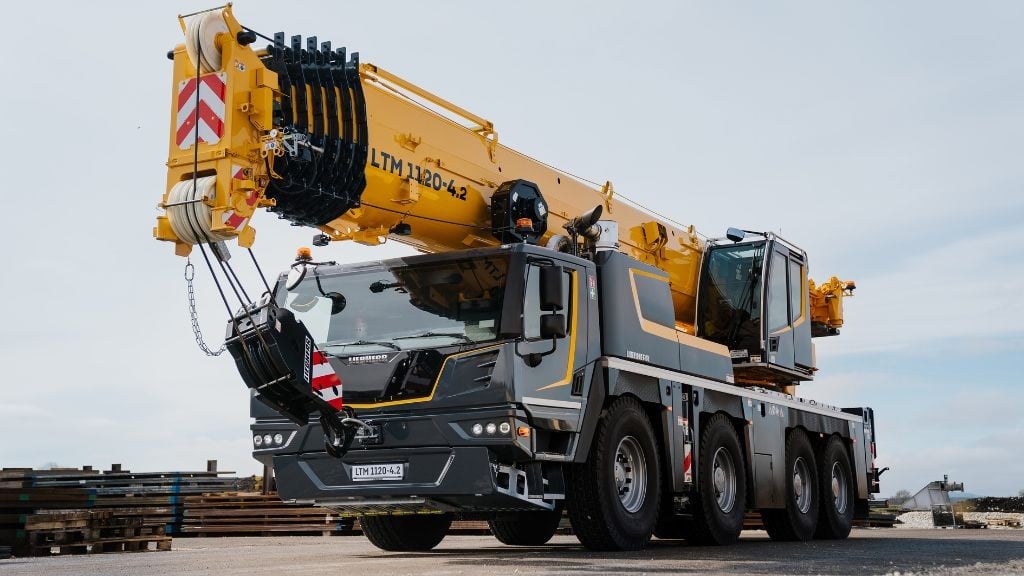
When designing the new Cat M318F and M320F Wheel Excavators, Caterpillar solicited customer input for characteristics considered important. Heading the list were initial quality and reliability, low operating costs, operator comfort and safety, simplicity of operation and maintenance, durability, and environmental friendliness. The new models are designed around those goals, while retaining the best features of predecessor models, including the Cat Smartboom™, ride control, load-sensing hydraulics, dedicated swing pump, hydraulically driven cooling fan, large working envelope, and configuration/work-tool versatility.
An automatic system, when enabled by the operator, senses machine parameters and locks the axle-oscillation function and sets the service brakes, readying the machine to dig. This feature reduces operator fatigue by removing the need to constantly press the brake pedal and results in added productivity. Brake and axle lock are automatically released when the operator presses the travel pedal again. Also, a new travel-lock system, engaged via the switch panel, combines implement-stop and swing-lock functions. For further convenience, cruise control is a standard feature allowing the operator to choose the very speed he wants and can be activated via the Quick-Access button on the monitor.
Versatility being one key attribute of wheel excavators, operators can adjust the machine to the task and to personal preference, hydraulic pressures and flows for work tools can be easily adjusted.
The M318F and M320F also incorporate a PIN-code anti-theft system. For operator convenience during short breaks in production, the system remembers the last code entered before engine shutdown and allows that code to remain active for a period of time.
Also, a new blade for the M318F and M320F has a redesigned profile, allowing the blade to remain parallel to the ground at any height and assisting material to roll more easily in front of the blade.
The engine in the new models, as in predecessor models, is longitudinally mounted with the cooling package forward of the engine, resulting in easy, ground-level access to routine maintenance points. An electric fuel-priming pump eliminates filling filters before installation. All the radiators are now grouped in the same compartment and the condenser can be tilted with no tool for ease of cleaning. Electrical and hydraulic components are now grouped in specific areas for ease of service and an automatic centralized greasing device (Auto-lube) is standard allowing operators to remain focused on the job.
The Cat C7.1 ACERT™ engine is rated at 169 horsepower (126 kW), meets USA EPA Tier 4 Final/EU Stage IV emission standards and features refinements that yield added torque and faster response to changes in load.
The C7.1 ACERT engine, with a durable, field-proven design, now integrates an emissions after-treatment system, which requires no attention other than periodically replenishing the diesel-exhaust-fluid (DEF) tank. Emissions technology includes the Cat NOx-reduction system, selective catalytic reduction, diesel oxidation catalyst, diesel particulate filter (DPF), and high-pressure/common-rail fuel system. The DPF passively regenerates (burns away collected soot), requiring no intervention by the operator and causing no interruption in the work cycle.
The optional Cat Bio HYDO™ Advanced hydraulic oil and bio-diesel (up to 20% mixed with Ultra Low Sulfur Diesel Fuel) can be used without reducing the life of the systems.
An engine-idle shutdown system saves fuel by shutting down the engine when it has been idling for a preset amount of time. In addition, Eco Modes have been refined and reduce the engine speed with no reduction of power providing reduced fuel consumption with no compromise in performance.
A new electronic control hydraulic system combined with new medium-pressure and fan pumps enhances hydraulic response and reduce overall load on the engine for greater fuel efficiency.
The design of the engine and the after-treatment system results in low fluid consumption for new models, conserving both fuel and DEF to lower operating costs. Depending on the application, fuel consumption for the new models can be as much as 10 percent lower than that of predecessor models.



